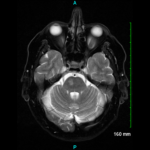Q: Regarding the duration of tocilizumab and glucocorticoids, there’s been a lot of interest in this with ANCA-associated vasculitis and lupus, but there’s been limited data. Was there any discussion on the duration of these?
Dr. Maz: There was a lot of discussion about it, but we had to look at the data behind answering this. I’m sure some readers of the guideline will have the same question and want to know about how to manage these patients. Because of a lack of long-term evidence on how long to treat these patients, the optimal duration is not determined. We were only able to present a position statement that the optimal duration of therapy is not well established and should be guided again by patient values and preferences. This was discussed among the patient panel, which emphasized minimizing the use of glucocorticoids. They recognized that relapses occurred, and patients may need to be treated longer. The physicians had a similar thought process.
Regarding the length of therapy for tocilizumab, lack of long-term follow up for tocilizumab at the time of the literature review for this guideline development influenced the decision. The first part of the GiACTA study reported the effect of tocilizumab for 12 months, but the second part extended the data for three years, with favorable responses seen in these patients.
Although we couldn’t really outline length of therapy, we did mention that in patients with GCA who are in apparent clinical remission, we strongly recommended long-term clinical monitoring over no monitoring at all, which was the only strong recommendation in this guideline given the minimal risks and potential catastrophic outcomes if patients are not monitored.
The important point to emphasize here is that the goal and the vision of the ACR for this guideline are similar to other ACR guidelines. The ACR/VF vasculitis management guideline will be updated periodically to provide a timely recommendation based on new data or new therapies as they become available.
 Michael Putman, MD (@EBRheum), is an assistant professor at the Medical College of Wisconsin, Wauwatosa, where he is the associate fellowship program director and the medical director of the vasculitis program.
Michael Putman, MD (@EBRheum), is an assistant professor at the Medical College of Wisconsin, Wauwatosa, where he is the associate fellowship program director and the medical director of the vasculitis program.
References
- Jennette JC. Overview of the 2012 revised International Chapel Hill Consensus Conference nomenclature of vasculitides. Clin Exp Nephrol. 2013 Oct;17(5):603–606.
- Maz M, Chung SA, Abril A, et al. 2021 American College of Rheumatology/Vasculitis Foundation Guideline for the Management of Giant Cell Arteritis and Takayasu Arteritis. Arthritis Rheumatol. 2021 Aug;73(8):1349–1365; and Arthritis Care Res (Hoboken). 2021 Aug;73(8):1071–1087.
- Hellmich B, Agueda A, Monti S, Buttgereit F, de Boysson H, Brouwer E, et al. 2018 Update of the EULAR recommendations for the management of large vessel vasculitis. Ann Rheum Dis. 2020;79(1):19–30.
- Stone JH, Tuckwell K, Dimonaco S, Klearman M, Aringer M, Blockmans D, et al. Trial of tocilizumab in giant-cell arteritis. New Eng J Med. 2017 Jul;377(4):317–328.


